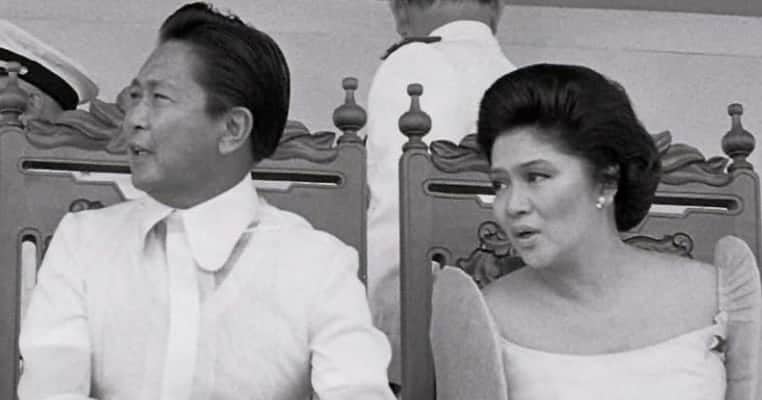In 1976, Filipino journalist Primitivo Mijares wrote The Conjugal Dictatorship of Ferdinand Marcos and Imelda Marcos, a tell-all that spilled the beans about the Philippines’ dictator and his wife. The phrase “Conjugal Dictatorship” caught on and entered the Philippines’ political lexicon, to describe the power held by Ferdinand and Imelda Marcos. It was especially applied to Imelda, who held numerous government positions that transformed her into a political power in her own right, and thus wielded more influence than typical of a First Lady.
Writing and publishing a book critical of the Philippines’ corrupt power couple was a courageous act. However, because it happened in real life and not the movies where courageous good guys usually come to a good ending before the final credits roll, Primitivo Mijares paid dearly. He disappeared soon after publishing his book. His son Boyet Mijares was found dead later, after he was brutally tortured and dropped from a helicopter. It was swept under the rug by Filipino police, who claimed that it was a case of college fraternity roughhousing and hazing that had gone wrong. However, Boyet Mijares was not in college: he was still in high school, a year away from graduating.

Ferdinand Marcos, The Male Half of the Conjugal Dictatorship
Ferdinand Edralin Marcos (1917 – 1989) was a lawyer who entered politics in 1949. From early on, he was one of those compulsive liar types, given to telling brazen whoppers that were easily debunked. However, he correctly reasoned that his supporters would neither check nor believe anything negative about him, and that his opponents were opponents, and thus did not matter. One of his favorite lies was that he had played an active part in World War II, and had fought alongside the Americans in the Bataan Death March. He eventually claimed that he was “the Philippines’ most decorated war hero”. US Army documents describe Marcos’ claims as “absurd” and “fraudulent”.
His real life story, while lacking wartime heroics, was interesting enough. The son of a prosperous lawyer and politician, Ferdinand Marcos first gained fame – or infamy – while still a teenager, when he was charged with assassinating one of his father’s political opponents in 1933. He was tried and convicted, but the conviction was overturned on appeal by the Philippines’ Supreme Court. While the case was pending, he graduated from the University of the Philippines’ College of Law and passed the bar exam – although the Supreme Court lowered his grades after he was accused of cheating. He became a trial lawyer in Manila.
An ROTC member in college, Marcos was activated as an officer when Japan invaded the Philippines. Although he played little or no part in the war, Marcos invented a mythology in which he had been a heroic guerrilla leader during the Japanese occupation (1942 – 1945). It was enough to get him elected to the Filipino House of Representatives in 1949, and the Senate in 1959. He became Senate President, then ran for the Philippines’ presidency, winning a bitter election in 1965, and a controversial reelection in 1969.

His administration, especially in its second term, was plagued by mounting protests and student demonstrations. So in 1972, Marcos did away with democracy and imposed martial law. Habeas corpus was suspended, political opponents were jailed, tortured, murdered, or disappeared, and the Filipino military was transformed into an arm of the Marcos regime. Martial law lasted for a decade, during which Marcos assumed extraordinary powers and ruled as an authoritarian dictator.
The regime had already been marked by corruption and shadiness when Marcos ruled as a democratically elected president. After declaring martial law and switching to a dictatorship, without even the pretense of checks and balances, the Marcos regime became globally infamous for its corruption, extravagance, and brutality. Authoritarian strongmen and corrupt dictators were not unusual during Marcos’ years in power, but two things distinguished and set the Philippines apart. First, was the sheer brazenness with which Marcos and his cohorts engaged in their corruption. Second was the prominent role played by Ferdinand Marcos’ wife, Imelda. In an era when First Ladies were usually kept in the background, Imelda Marcos stepped to the forefront as an unabashed and unapologetic participant in her husband’s kleptocracy.

